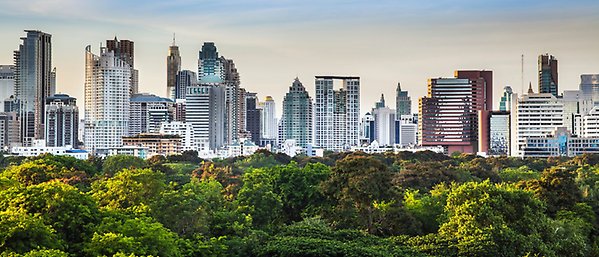URBANISATION
Without the ‘hinterlands’ cities will struggle
A closer alignment between cities and their surroundings will be key for positive development and governance
- Although urbanization has existed for millennia, in its present form it functions as an accelerating aspect of the Anthropocene
- Responding to the challenges of urbanization demands fresh commitments to a city–regional perspective
- Three key urban leverage points include 1) shifting diversity, 2) shifting connectivity and modularity, and 3) shifting complexity
THERE'S MORE TO CITIES THAN THE CENTRE: In the Anthropocene, accelerated growth in human activity is causing rapid, interacting changes to our planet. Many of these changes can be traced to the expansion of cities, generating new, extreme and far reaching global vulnerabilities and making global urban change an important frontier in science for sustainability.
Although urbanization has existed for millennia, in its present form it functions as an accelerating aspect of the Anthropocene. Cities are responsible for around 70% of global carbon emissions, but are disproportionately and increasingly exposed to the impacts of climate change.
Positive forces
In a comment in the new journal npj Urban Sustainability, a leading group of urban sustainability experts led by centre researcher Thomas Elmqvist highlight the potential of cities and their rural hinterland “support areas” as key positive forces for sustainable development and governance.
Cities have long been known to depend on their natural hinterlands.
What is important is not just that cities and their hinterlands are interdependent, but that the form of their interdependencies are increasingly complex and significant globally—as the COVID-19 pandemic has recently demonstrated.
Thomas Elmqvist, lead author
Three interventions
Elmqvist and his colleagues show how three intervention points can be used to boost sustainability.
1. Rescaling diversity
Attention to and investment in diversity could include such strategies as more local and regional sourcing of more diverse foods or intentionally designing hybrid green, blue, and gray infrastructure particularly with emphasis on diversity and flexibility, which may reduce vulnerability to disturbances.
2. Managing connectivity and modularity
For example, the initiation of new incentives for more sustainable landscape management that fosters new types of urban–rural connections, and also fosters city–city linkages focused on sustainability at larger scales.
3. Managing increasingly complex connections to the biosphere
New crises will need complex responses where different actors/units can add complementary contributions, but this requires communication among actors, social trust, and ability to coordinate complexity.
“These interventions can offer a framework for more successful realization of positive urban visions and for guiding action towards a more regenerative urbanization in and for the Anthropocene,” the authors conclude.
New journal: npj Urban Sustainability
npj Urban Sustainability is a new open access, online-only journal, dedicated to publishing high-quality papers that describe the significant and ground-breaking research covering urban environments through the lens of sustainable development, studied across a broad range of research topics. Thomas Elmqvist is Editor-in-Chief.
Elmqvist, T., Andersson, E., McPhearson, T. et al. 2021. Urbanization in and for the Anthropocene. npj Urban Sustain 1, 6 (2021). https://doi.org/10.1038/s42949-021-00018-w









